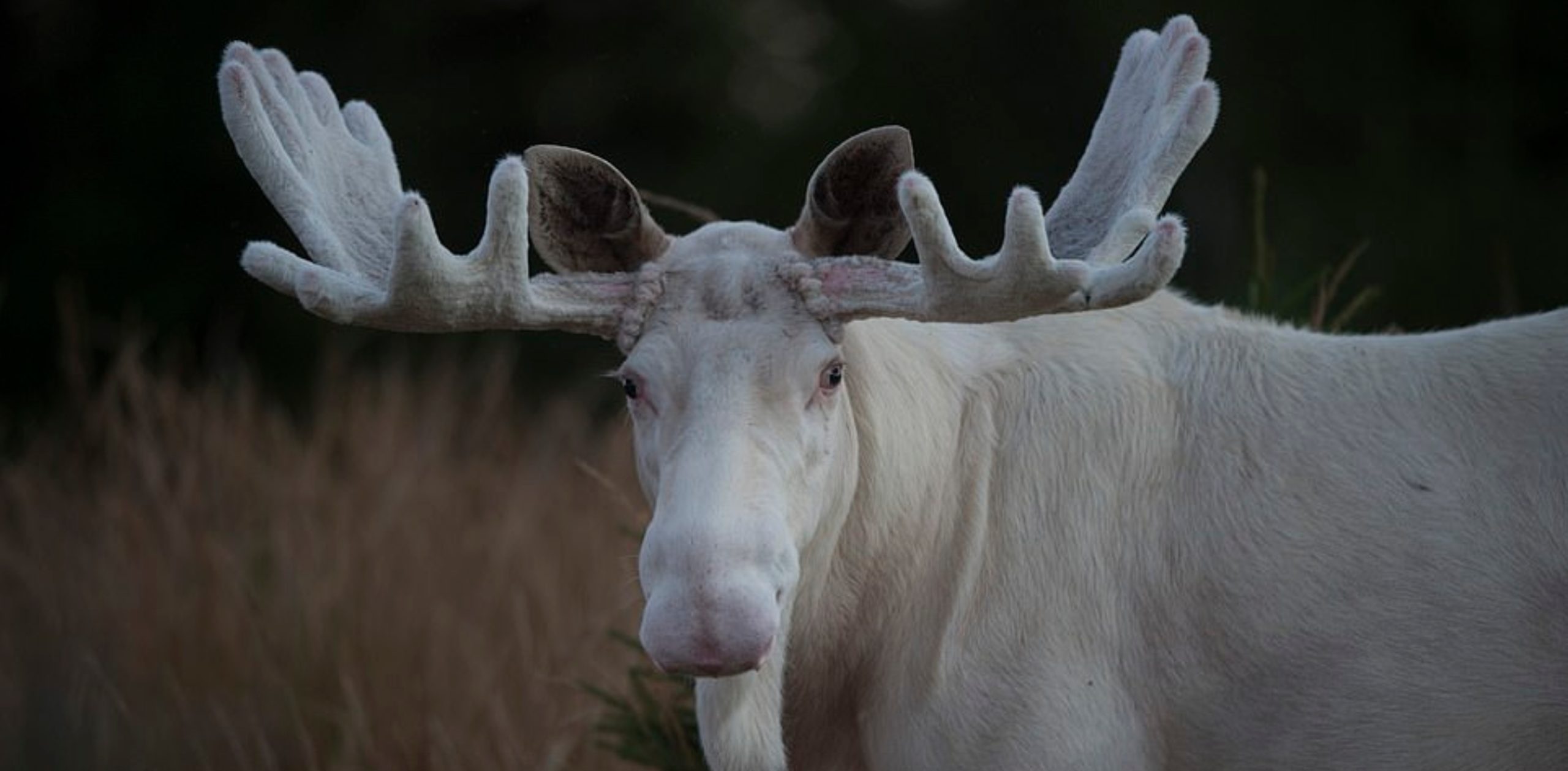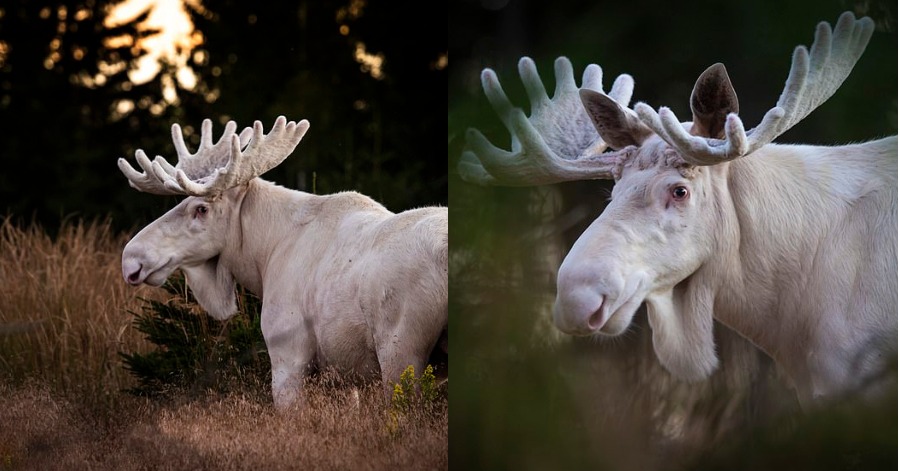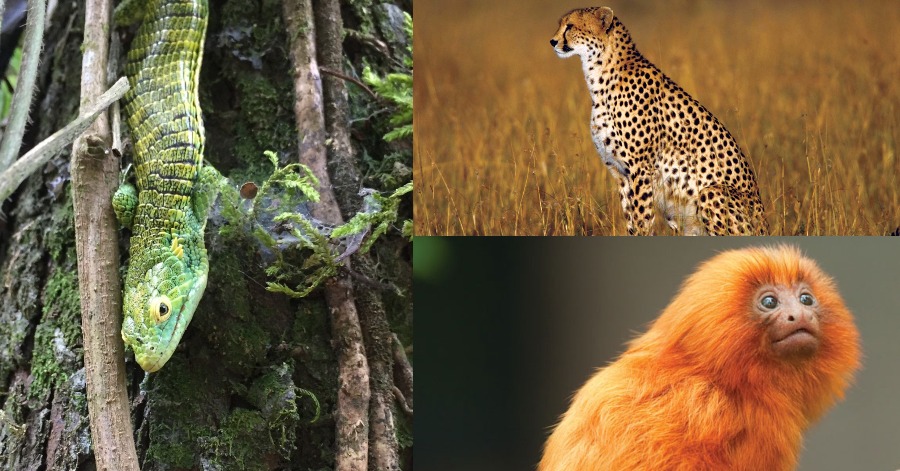A glimpse of the moose captured by Roger Brendhagen, 52, during a walk through the countryside near Värmland.
It is believed that about thirty white moose live in the area.
They were also seen in Canada and Alaska.
The whiteness of the animals comes from a rare recessive gene, known as piebaldism, that causes the condition. In Sweden, a white moose with an unusual genetic disorder that gives no color to its fur has been spotted.
During a walk through the countryside near Värmland, Roger Brendhagen, 52, caught a glimpse of a moose.
As about 30 white moose live in the area, the wildlife photographer said he was delighted to come across the animal.

“I have met thousands of moose in my life but when I met this guy in the Swedish forests, I almost lost my senses but thank God I did not lose the camera,” the native of nearby Oslo, Norway, said.
The whiteness of the moose does not derive from albinism but is the result of a recessive gene that may cause the animal to develop white fur with brown specs, or an entirely white coat in rare cases.
According to National Geographic, the disease is known as piebaldism and has also been seen in moose in Alaska and Canada.
Not like albinism, piebaldism which comes under the umbrella term leucism, sees an animal losing its pigment in fur, feathers, or scales but not in its eyes.
“The animal can become lighter, partly white or completely white in color, however, eyes, beak, and claws often have normal pigmentation, in contrast to albinism,’ Brendhagen explained.
Source: Daily Mail UK, National Geographic









Leave a Comment